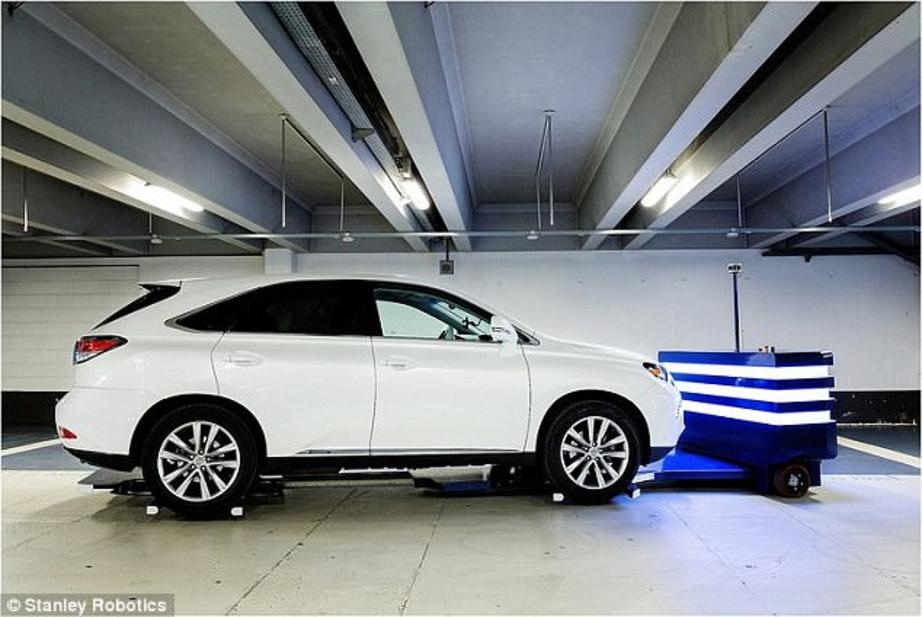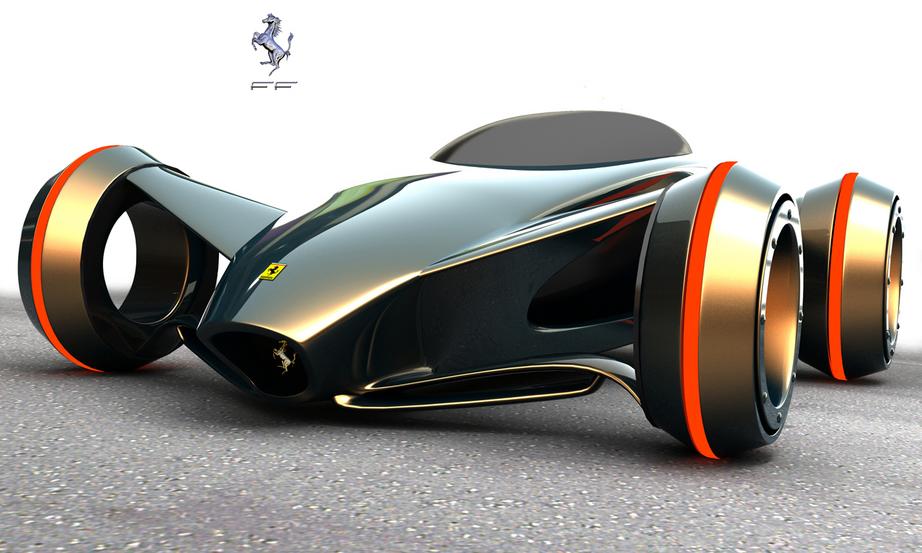Meet Stan, the superstrong robot valet that can pick up your car and park it for you
- The robot works by slipping under the car and lifting it gently by the wheels
- Customers book their spot online through a smartphone app or via the website
- The robot parks the car in a secured area, and can stack up to five in a single line
- It doesn't require construction, so it can quickly be deployed in any car park
- This means the robot can an increase parking lot capacities by up to 50 per cent
- The system is already being used at Charles de Gaulle airport in Paris, France
A French startup company has developed an automated valet service operated by a robot.
The robot, named Stan, doesn't require a customer's car keys - instead, it picks up your vehicle and takes it a secure car park.
The system is also connected to the customer's flight details, so their car is ready to be picked up when they return, and it can also maximize space by double parking in front of vehicles that don't need to be picked up immediately.
Scroll down for more videos
The robotic system, designed and developed by Stanley Robotics, has already been adopted by Paris' Charles de Gaulle airport.
The company just raised $4 million (€3.6 million) from Elaia Partners, Bpifrance and Idinvest Partners.
The company's website claims the system works by first booking your spot online through a smartphone app or directly via the website.
The system can stack multiple vehicles (up to five) on a single line by removing some of the aisles that would normally be used by driver's to navigate a parking lot. This means that the robot can can increase parking lot capacities by up to 50 per cent.
HOW IT WORKS
The robot works by slipping under the car, lifting it gently by the wheels and parking it in a secured area.
The robot also scans the car and adjusts to its size to protect it from damage.
The robot gently lifts the car by the wheels and parks it in a secured area. When the customer returns, the car is ready to pick up or can be retrieved via the app
The system can stack multiple vehicles (up to five) on a single line by removing some of the aisles that would normally be used by driver's to navigate a parking lot.
Then, the customer drives their car to the Stanley robotics area of the parking garage.
Once the car is ready to be dropped off, the owner confirms their booking on the terminal by the door.
Then, the owner locks it and keeps his or her keys.
When the customer returns, the car is ready to pick up or can be retrieved via the app.
According to Stanley Robotics, the robot is electrically powered and so contributes zero carbon emissions.
The robot scans the car and adjusts to its size to protect it from damage. It works by slipping under the car, lifting it gently by the wheels
It works by slipping under the car, lifting it gently by the wheels and parking it in a secured area.
The robot also scans the car and adjusts to its size to protect it from damage.

The system can stack multiple vehicles (up to five) on a single line by removing some of the aisles that would normally be used by driver's to navigate a parking lot.
Once the car is ready to be dropped off, the owner confirms their booking on a terminal by the door. Then, the owner locks it and keeps his or her keys, and the robot whisks it away
This means that the robot can can increase parking lot capacities by up to 50 per cent.
The company claims that the system doesn't require additional construction, so it can quickly be deployed in any parking garage.
They also claim that because Stan parking garage's are in spaces with no public access, maintenance costs such as lighting, ground marking, cleaning and exhaust air can be eliminated.
Stanley Robotics claims that the system doesn't require additional construction, so it can quickly be deployed in any parking garage
For the rest of this article please go to source link below.
Video can be accessed at source link below.

